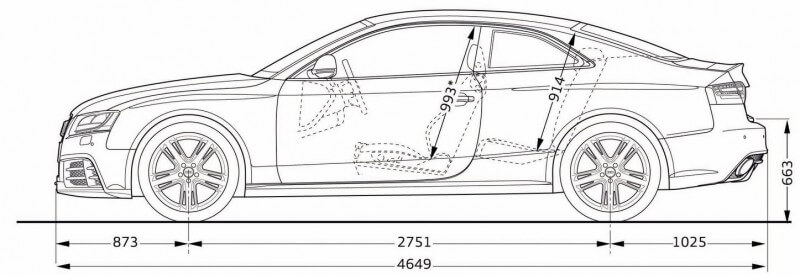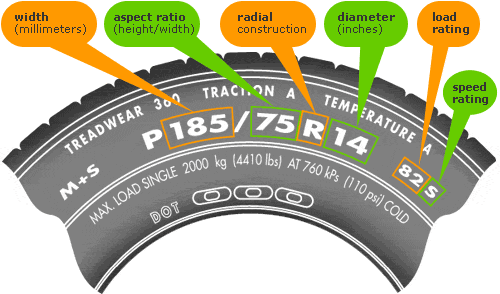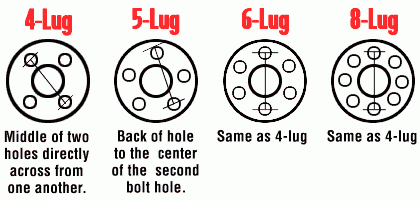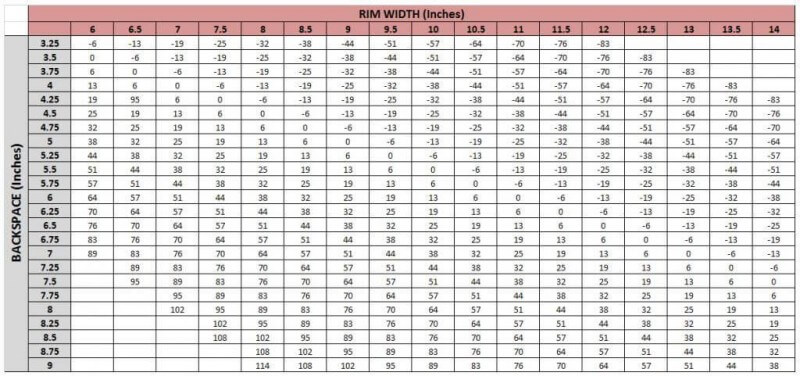WHEEL AND TIRE TERMS GLOSSARY
Air pressure
– the measure of the force exerted by the air inside a tire, measured in pounds per square inch (psi)Aspect ratio
– the relationship between a tire’s section height and its section width. It is calculated by dividing the section height by the section width. When the section height is half of the section width, the aspect ration is 40. In a tire size description, it would be the 40 in P205/40r16. It is also called the tire’s profile or the series.Asymmetric
– tires that have differing tread patterns on each half of the tireCamber
– the angle of the centerline of a tire and wheel relative to completely vertical.Cast
– wheels that are made from liquid metal being poured into a mold. Low pressure casting involves pouring into a mold, while counter pressure casting involves sucking the metal into the mold like a vacuum. The counter pressure technique reduces impurities making the wheel much stronger than a low pressure cast rim.Caster
– the angle between the vehicle’s steering pivot axis and completely vertical.DOT
– stands for Department of Transportation. The 10 digit code appearing after the DOT designation gives information such as the week and year the tire was produced, as well as the manufacturerr, plant, tire line, and size.Forged
– Considered to be the best wheel manufacturing technique, forging allows for the compression of an aluminum billet (one solid piece of aluminum) into an aluminum wheel using over 13 million pounds of pressure combined with heat. This produces a wheel that is both stronger and lighter then your standard aluminum wheel.Hub centric
– a wheel with a center bore made to match up with a vehicle’s hub diameter.Hub rings
– hard plastic or aluminum rings mounted on a vehicle’s hub before the wheel. They ensure the wheel is perfectly centered on the vehicle’s hub. Without hub rings, there is a possibility of getting a vibration even if the wheel & tire assembly is perfectly balanced.Load index
– a number used to represent the maximum weight a tire can support. The index number corresponds to the actual load carrying capacity. Truck tires use a different system incorporating letter codes to establish a Ply Rating.M+S
– a sidewall marking indicating that the tire is approved for Mud & Snow use.Mounting
– installing tires onto wheelsOverinflation
– when a tire is inflated more than the recommended vehicle air pressure. This might be done for better performance but has negative consequences including: a less comfortable ride, damage to the tires and stress on the suspension.P
– metric system – a system for specifying tire sizes using the treadwidth (millimeters), the aspect ratio, type or tire construction and the rim diameter (inches). The sizes are written as such: P195/50R15Plus sizing
– changing from the original stock tire size of your vehicle. Plus sizing your wheel & tire combination was designed to enhance vehicle performance and looks by allowing fitment of larger diameter rims and lower profile tires. The theory is that while making these changes, you keep the overall tire diameter within 3% of the original equipment tires. This is important because larger variances can cause problems with transmission shift points which can decrease fuel mileage. It can also confuse braking system computers which can even lead to brake failure.PSI
– the most common measurement unit for tire pressure. It stands for pounds per square inch and it measures the force exerted by the air inside a tire.Radial tire
– tires built with plies running perpendicular (90 degrees) across the crown of the tire. To strengthen the tread, these tires require belt plies going circumferentially around the tire.Rim width
– the measurement between the flanges of a rimRotation
– moving a vehicle’s tires from left to right and from front to rear. This is done in a set pattern and should be done periodically. Its purpose is to prevent uneven tire wear and to extend tread life.Section width
– the distance between the sidewalls at their widest point of an inflated tire not under load.Sidewall
– the side portion of a tire between the tread and the bead. >More InfoSpeed rating
– a letter that identifies a tire’s high speed durability. A tire’s capabilities are tested at preset speeds and the results of these tests determine the tire’s speed rating. Speed Ratings include: Q, S, T, U, H, V, Z, W, YTire sizing guide
– A guide to provide the correct tire size.Tread depth
– the distance from the top of the tread to the grooves in a tire. This measurement is taken at the centerline of a tire and is measured in thirty-secondths of an inch.Tread pattern
– the arrangement of grooves, blocks, sipes and channels on the tread.Tread shaving
– shaving some of the tread from a tire for optimal performance and durability in racing applications.Tread wear
– also called the tread life, it is the measure of how long a tire lasts. It is measured in miles or kilometers.Tread wear indicators
– narrow rubber bars built into the tread grooves that define the tire’s legal wear out point. Also called the wear bars, they are even with the tread when 2/32″ of tread is left and then the tires are ready to be replaced.Treadwidth
– the width of a tire tread, normally measured in millimeters. In 195/50R15 the treadwidth is 195mm.Underinflation
– a tire with less than the recommended air pressure for a given load. This may lead to tire rollover and deflection.UTQG
– The Uniform Tire Quality Grading rating is a quality rating system developed by the American Department of Transportation. It is designed to tell consumers the relative performance of passenger tiresWheel Alignment
– refers to the correct angle settings of suspension components – the 3 alignment settings are caster, camber and toe.Wheel Backspacing
– also called rearspacing, it is the distance from the mounting pad to the back edge of the rim. This is different than wheel offset.Wheel Balance
– equal distribution of the weight of a tire and wheel. If a tire & wheel is not balanced it can lead to vibrations or uneven wear. For balancing, weights are attached to the wheel to compensate for uneven weight distribution.Wheel Bolt pattern
– the arrangement of the bolt holes on a wheel. A 5 bolt wheel with 120mm between opposite bolt holes would be written as 5×120. Some wheels have more than one bolt pattern on the same wheel to accommodate multiple fitments.Wheel Centerbore
– the center hole in the wheel that centers the wheel on the hub of the car. Since most wheels are mass produced, they have a large center bore to accommodate several different vehicles. If this is the case, it is recommended that you use a hub ring. Hub rings are hard plastic or metal ring that fits between the wheel and the vehicle. This centers the wheel perfectly on the hub ensuring that there is no run out when the wheel is installed on to the vehicle. Without hub rings it is possible to get vibrations even if the wheel / tire assembly is perfectly balanced.Wheel fitment tool
– a website designed to calculate which wheels will fit best on a vehicleWheel guide
– an arrangement of wheels on a site specifying wheel diameter, wheel center bore, wheel bolt pattern, wheel lug nuts, and wheel finish.Wheel offset
– The offset of a wheel is the distance from the mounting surface of the wheel to the true centerline of the rim. A positive offset means the mounting surface of the wheel is positioned in front of the true centerline of the rim / tire assembly. This in effect brings the tire in to the fender well more. Conversely, a negative offset means the mounting surface of the wheel is behind the true centerline of the rim / tire assembly. This will cause the tire to stick out away from the vehicle.Wheel weights
– weights attached to a wheel to balance a tire & wheel. The weights can be on the inside or outside of the wheel and can be clipped, taped or self-adhered to the wheel.OUR GUARANTEE
We’ll beat any lower advertised price! In our effort to be the largest rim distributor, we are constantly adding new wheel brands. Don’t see your favorite wheel line? Send us an email and we’ll look into getting them listed!
QUICK LINKS
LOCATION
Hours: Monday - Friday 8:00am to 6:00pm
Weekends: Saturday - 9:00am to 3:00pm
Address: 1497 E. Baseline Rd. Suite 4-109
Gilbert, AZ 85233
E-mail: info@ExtremeWheels.com
Phone: 480-892-9433
![]()












